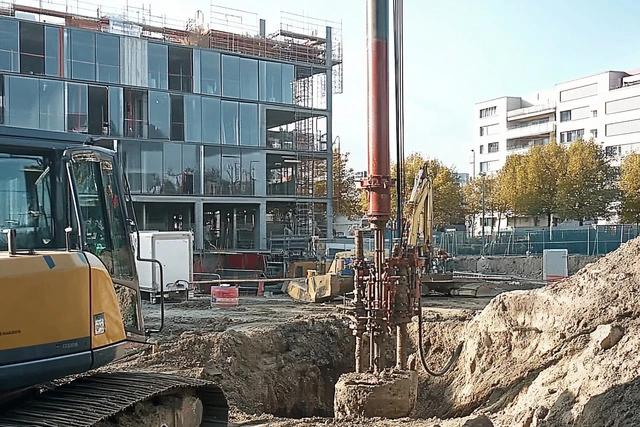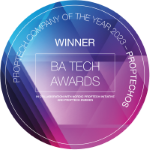The earth’s core temperature is around 6,000°C, roughly five times hotter than your average furnace inside a coal power plant. Our planet has a limitless and untapped energy supply that only a handful of nations utilize. Only 32 countries operate geothermal plants; most are between the earth’s tectonic plates, such as the USA, Iceland, Philippines, and Indonesia. These countries benefit from thinner crust on fault lines, making extracting heat and converting it into electricity easier.
Yet harnessing this type of energy doesn’t have to be limited to areas with volcanic activity. Geothermal heat pumps can be installed on a building of any size, making them a low-carbon, renewable, and efficient decentralized energy source for your commercial real estate (CRE) business.
Ground source heat pumps (GSHPs) can be an effective solution for organizations that can bore the necessary underground pipework. Research by Oak Ridge National Laboratory found that adopting heat pumps in 70% of US buildings could reduce national energy demand by 15% and save up to 7 billion metric tons of carbon-equivalent emissions.
Geothermal technology has the potential to revolutionize energy consumption in CRE and reduce the sector’s ever-increasing carbon footprint, but is it the right solution for your business? This article will explain everything you need about geothermal energy and its potential application in ESG green buildings.
Geoenergy fundamentals for real estate
The built environment now accounts for 37% of the world’s emissions total in 2024, placing intense pressure on the CRE sector to rapidly decarbonize its operations while providing meaningful social value. As a limitless source of clean energy that harnesses the earth’s limitless resources, geothermal energy has a crucial role in shaping real estate’s environmental impact for generations.
How geothermal heating and cooling systems work
In commercial buildings, geothermal energy is converted to heat and electricity using ground-source heat pumps (GSHPs) or geothermal heat pumps (GHPs). They consist of sub-surface piping systems that are injected with fluid and heated using the pump’s compressor, which can be transferred into the building’s HVAC system.
In the winter, these pumps extract heat below the surface, providing an energy-efficient heating source. In the summer, their role is reversed. Instead, they extract warm air from inside the building and releases it below ground, cooling the building and relieving pressure on air conditioning units.
Horizontal loop GSHPs are much shallower. Pipes are usually routed 1.5m—2m below the ground. They connect to a series of ground collectors, which absorb thermal energy underneath the surface. At this level, the ground temperature remains around 10-12°C year-round. Some GSHPs may also be installed under surface lakes and ponds, allowing the water to be used for heating or cooling.
Vertical loop GSHPs are more difficult to install at scale, as vertical rather than horizontal ground collectors are fitted to extract heat from the earth. These tap into deeper-level ground heat, and can be bored up to 500m below the surface, where temperatures rise to around 25°C.
Heat pump utilization in CRE
Geothermal energy has the potential to be utilized in various ways within CRE. If your organization owns a building with available land (approximately 700m2), installing GHPs can be a cost-effective energy source. For commercial office space, pumps can integrate closely with an HVAC system to provide heating and cooling throughout the floor plan.
The US Department of Energy estimates that well-maintained GHPs can reduce energy use by 30-60% each year, and infrastructure can have a life span of 25 years or more with minimal maintenance requirements. GHPs can integrate seamlessly with energy management control systems, relieving pressure your building’s HVAC system by supporting temperature regulation throughout the course of a year.
Considerations for property owners
While geothermal energy has tremendous potential to improve energy efficiency and reduce emissions within the built environment, there are several reasons why its usage remains limited in CRE relative to other forms of regenerative energy. Addressing the practical and logistical barriers to geothermal deployment will require government intervention.
In response, the US government is incentivizing GHP adoption, with tax credits available for residents and businesses that install ENERGY STAR-rated systems. On the other side of the Atlantic, the European Commission estimates that 10 million additional GHPs will be installed across the EU by 2027, with the potential for technology to reduce Europe’s gas demand for heating by 20 million m3 by the end of the decade.
Practical and logistical challenges of GHP implementation
Cost-effectiveness is a significant barrier to widespread geothermal adoption. GHPs in commercial buildings average around $100 per m2, but the choice of loop structure can significantly impact the scale of investment. The deeper-bore vertical loop system has a much higher average cost of $118 per m2 compared to shallow horizontal loop GSHPs, which are $55 per m2. However, horizontal loops require spare land, making them impractical in urban settings.
On the other hand, deep drilling in urban areas is risky work, particularly in large cities with major underground infrastructure such as sewage tunnels, sub-surface power cables, and public transportation. While it may be logistically possible, seeking permission can often be challenging, especially in European cities where complex regulatory frameworks can slow the process down.
Geothermal emissions vs. traditional HVAC systems
If your organization can overcome the central obstacles to GHP installation, they are certainly worth considering as a property owner. Once bores are in the ground, they can cut energy bills by up to 65% compared to traditional HVAC units, requiring minimal maintenance. It can also expedite the LEED rating process, with GHPs alone accounting for a fifth (22%) of the total credits needed to achieve certification.
Opportunities for geo-energy innovation in the CRE market
The GHP global market is experiencing noticeable growth as the drive for renewable energy becomes more prominent. In 2023, the sector was worth an estimated $11.9bn, and technological advances are being made to bridge the accessibility gap and enable more businesses to install pumps in their buildings.
Smart retrofits and connected communities
The EU-funded GEOFIT project is one example of innovation creating geothermal adoption opportunities. Using ground-penetrating radar, digital twin technology, and advanced precision drilling techniques, the project has successfully retrofitted GHP systems in five pilot sites. This includes a 10th-century villa in Perugia, Italy.
Smart retrofits also have a broader role to play in the trajectory of sustainable urban development. Buildings that undergo extensive retrofits to install regenerative energy can lead by example as champions of ESG smart buildings, and their systems can lay a path toward smart neighborhoods, where multiple IoT-enabled buildings become interconnected and optimized through shared energy consumption.
Mixed-use developments as thermal anchors
Another significant opportunity for geothermal technology lies in the development of large mixed-use developments in cities. These projects offer the chance to bore the necessary pipes required for GHPs from the start and, if factored into the design, can offer significant energy reduction across the site once they are fully complete.
The Salisbury Square Development in London is one example. In 2023, it became the city’s first standalone geothermal site, and despite London’s complex underground geography, more than 60 holes were bored at a depth of 240m to provide year-round heating and cooling across the site. Situated in the heart of the city, it will be the home of the City of London Police, the HM Courts and Tribunal Services, and grade-A office space.
Expand your geothermal possibilities with an ecosystem of ProptechOS
The future is bright for geothermal technology, and recent developments prove that you no longer need to straddle the ‘Ring of Fire’ to harness heat from the earth’s core. If your CRE business is serious about adopting geothermal energy, Proptech solutions are on hand to ensure your investment operates at maximum efficiency.
With the portfolio-scale savings to be made, our Energy toolbox will help your organization find the best possible solutions to optimize your energy consumption. Our operating system for Proptech will enable your teams to monitor energy consumption in real-time.
With a GHP supplementing your HVAC system, your teams can utilize ProptechOS to inform decision-making around the pump’s best use, maximizing year-round energy savings and reducing long-term maintenance costs.
Your CRE business can sign up for a free trial of ProptechOS today.

Dr. Erik Wallin
Chief Ecosystem Officer, and founder of ProptechOS and RealEstateCore is recognized as a leader in Building Operating Systems (BOS) and making the buildings of the world smarter. He holds an MSc and a Ph.D. in Media and Computer Science from KTH Royal Institute of Technology.
Read his full bio and information here.

